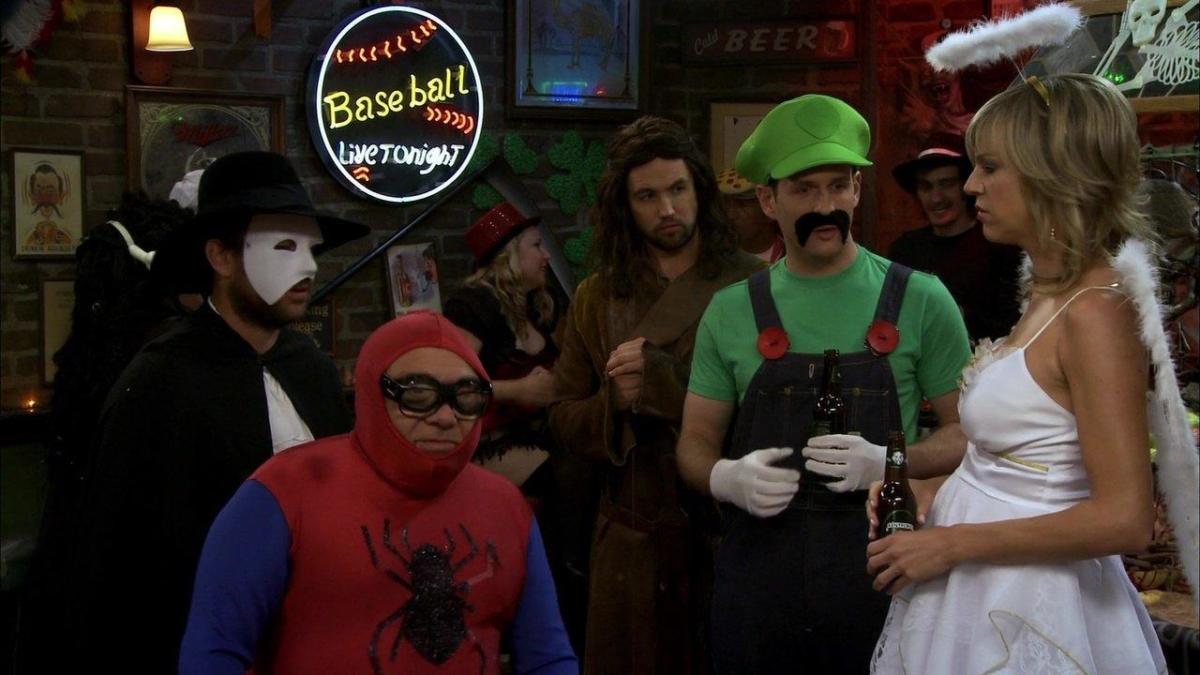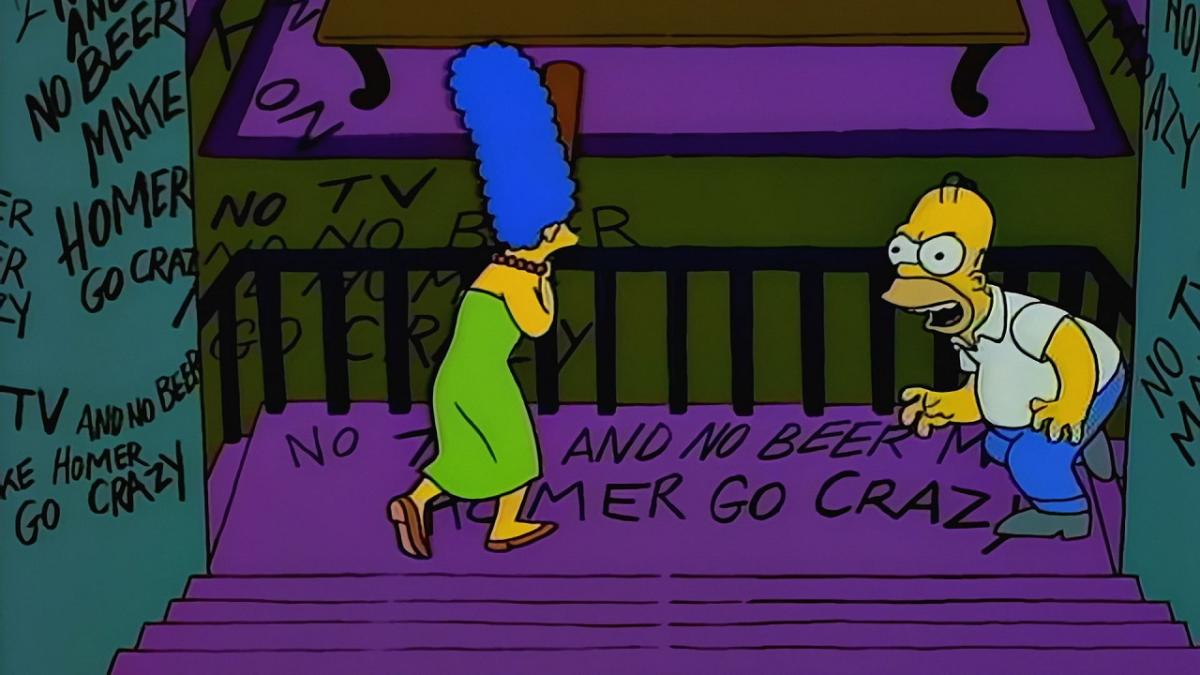Of the various holidays and festivals to be represented in the media, the Halloween special could only be topped by Christmas, which has all the backing of Santa, his little wizards, and wider global consumerism.
It’s a wide gulf between Halloween and the next most visible holiday – so wide there is no particularly obvious candidate. St. Valentine’s Day? Hopelessly diluted by screenwriters’ wishes to employ by-the-numbers sexual tension all the year round. Easter? By turns too Christian (don’t ask me how this charge is never laid against the holiday that actually has Christ in its name), or too childish, with its major associations being choccy eggs and bunny rabbits. Even New Year’s – it may see everyone turning out for a bit of a party, but therein lies the problem, it’s too vague, and beyond that, completely arbitrary. Plus, with Chinese New Year only a couple of weeks later, you risk offending a market that is no longer merely emerging, but fully emerged, waving its money about and bellowing for another drink. No, Halloween may take silver, but this is in a field where bronze may as well be a participation trophy.
But just how does the media represent it? Remember that the Venn diagram of Halloween and horror is not necessarily a perfect circle – the industry wants to churn out works of horror all year round too, particularly given the zombie explosion of the past decade-and-a-half. Halloween may be scary, but beyond that, it’s an aesthetic and an attitude all its own. The word itself is a contraction of All Hallow’s Evening – in the Western Church, the first of three days of remembrance of the dead. However, in practice this is often a Judeo-Christian veneer laid on top of old Celtic festivals such as Sam Hain and Calan Gaeaf, which marked the beginning of Winter – like the equinoxes, a changing of the seasons, and a time when the boundaries between our world and the netherworld were reckoned to get a bit hazy. And the Halloween special does, as much as any product of the industry can, reflect this.
There are two primary types of Halloween specials. The first is much like the standard Christmas episode, with the show’s players going about their business during the festival, perhaps with a bit of reflection on the values and important things the holiday is supposed to remind us of (in Halloween’s case, ‘costumes and candy’ as South Park once memorably put it). A prime example is It’s Always Sunny In Philadelphia’s ‘Who Got Dee Pregnant?’ – Halloween is largely tangential to the narrative, but the ubiquitous costumes add a masquerade element to proceedings, hence the question raised in the title.

(You can find this sort of holiday special reflected across the board now and again for the lesser holidays mentioned in the introduction – although some holidays get really scanted. For instance, calling Futurama’s ‘When Aliens Attack’ a Labour Day special on the strength of this might be pushing it.)
The first programme that can truly be considered a Halloween special was in much the same vein – an episode of The Adventures of Ozzie and Harriet titled ‘Halloween Party’, all the way back in 1952. Essentially a footnote in TV history, another saccharine nuclear family drama without the charm of I Love Lucy or the dysfunctionality of The Honeymooners (which had its own Halloween party episode, also titled ‘Halloween Party’ in 1953), The Adventures of Ozzie and Harriet is mainly notable for its longevity as a live-action sitcom, running for fully fourteen seasons – a record which, ironically, saw It’s Always Sunny In Philadelphia tying for it when that more recent challenger was confirmed for two further seasons last year.
Very often Halloween’s various traditional games will show up in this kind of special – for instance, apple-bobbing, which although it now seems childish is almost certainly a Chinese-whispered fusion of two different types of scrying, the practice of peeling an apple and throwing the skin over one’s shoulder, and the practice of dropping molten wax into cold water. Alternately it may be a game of their own invention, as in the Brooklyn 99 gang’s yearly heists, which could be likened to the trick from tricking or treating, or alternatively the protagonists temporarily crossing the ephemeral divide between cops and robbers. Putting on the costume, if you will.
And, to bring it full circle, back to the reference to Christmas, there’s Charles M. Schultz’s ‘Peanuts’ special ‘It’s The Great Pumpkin, Charlie Brown’, in which junior theologian Linus imagines a Santa-like Great Pumpkin who flies through the Halloween night, dispensing gifts to the good boys and girls. His peers all insist this is nonsense – but, with only the received wisdom of children, are unable to explain exactly why. Sadly, Linus – like so many believers before him – succumbs to his doubts, waits up all night in the pumpkin patch hoping for a glimpse of the big fella, and is accordingly punished for his lack of faith. (Schultz rolled hard for a guy whose most famous creation is a talking dog with an overactive imagination.)
The second type of Halloween special is, if you’ll forgive the obvious bias, far more in tune with the spirit of Halloween – with that time of year when the shadow-world reaches out its long, cold, possibly skeletal fingers and brushes the backs of our necks. Such episodes are typically non-canonical to the broader series which they make up, so as to reconcile their use of supernatural and fantastical elements within the narrative – including, very often, the sudden and splattery deaths of main characters. I would say they are taking the opportunity to cast off their usual restraints and do a straight horror story, but the finished products, gleefully wacky, tend more towards the freewheeling tone of an episode of Scooby-Doo. Neither can they generally be considered straight. Even when the Halloween special is an original story, it tends to have a hint of the parodic – to say nothing of when it actively parodies some established property.
Consider, for instance, Community’s episode ‘Epidemiology’, more usually known as ‘the zombie episode’ for obvious reasons, in which, yes, there’s an outbreak of zombification at the college. Even granted Community’s usual level of heightened reality, a localised zombie apocalypse and a subsequent military cover-up is a bit of a break from the norm. Rather than becoming a dark and forbidden chapter of their history, though, it is an opportunity to poke fun at all the usual rigmarole of zombie flicks – in particular the eternal pantomime performed by those who have obviously been bitten and are desperately trying to hide the fact.
One very recent example came from horror-comedy anthology series Inside No. 9, which only this week came out with a Halloween special of its own – curiously for a work of horror, this was a first for the series, even though it had already done a Christmas special, as had its direct ancestor The League Of Gentlemen. (Again, we see that in the wider world of holidays, Christmas tops the bill.) But the ideas we’ve established about Halloween specials held true. The Halloween special, ‘Dead Line’, revolted against the most fundamental tenet of the show, that each episode take place entirely within some place or other numbered 9, breaking both this common thread and the fourth wall. It merrily screwed with both the format and audience expectations in a way which, vitally in these days of streaming services and video on demand, could only have been done on live television.

(Sadly our American cousins only getting to see it two years from now, on Netflix, may diminish this twist value slightly.)
But the frontrunner of all of these – standing head, shoulders, and a good chunk of the torso above all its competitors – is The Simpsons and its annual Treehouses Of Horror. Yeah, you thought I might get through a whole article without wittering about The Simpsons, didn’t you? While The Simpsons proper began with a Christmas special, these have only made semi-regular appearances in the show’s long annals. Treehouse of Horror, on the other hand, first appeared in its second season and has been a consistent and well-loved part of the show ever since (the 27th season saw that year’s entry preceded by the other kind of Halloween special, which was acclaimed as one of the better Simpsons episodes of recent years).
The first Treehouse of Horror – the only one, incidentally, to actually be set in the treehouse – set the tone, riffing on haunted houses (still going strong as a horror setup), alien abductions, by way of The Twilight Zone’s ‘To Serve Man’, and Edgar Allan Poe’s ‘The Raven’, as narrated by none less than James Earl Jones. The aliens – the tentacled, perpetually drooling Kang and Kodos – became a recurring fixture of the Treehouses of Horror, usually just roaring with laughter at the scrapes of the ‘pathetic humans’, like green versions of Statler and Waldorf, but sometimes showing up as segment antagonists, the high-water-mark of which was probably them stealing the 1996 Presidential elections by replacing the candidates (“Don’t blame me – I voted for Kodos!”).
While this was of course an opportunity to push the envelope in terms of graphic violence, Treehouse of Horror VI also bears the distinction of being one of the first TV shows to use 3D animation – and contra most CGI of the mid-90s, because it was a 3D version of a cartoon character, it didn’t suck. And although this is less quantifiable, it broke ground in its sheer parodical ability. Treehouse of Horror V’s ‘The Shinning’ hit all the major plot beats of the two-and-a-bit-hour The Shining in a taut seven minutes – and not just that, but made it funny as well. The same can be said for all its various movie parodies, like ‘King Homer’ and ‘Nightmare On Evergreen Terrace’, and even the various Twilight Zone riffs, of which there were many, were trimming the stories down from half an hour while preserving the cornerstones of the plot.

(It must be said, Futurama also managed some exemplary Twilight Zone parodies with its typically sub-thirty-seconds episodes of ‘The Scary Door‘ – but this is the only work to come anywhere close, and was made by, in large part, the same people.)
But isn’t this flying a bit too close to describing just straight-out horror, if I’m praising their spoofs of slasher flicks for their accuracy? Well, yes, can’t deny that. But if there’s one aspect of the Treehouses of Horror that’s pure, undistilled Halloween, it’s the opening credits, where everyone gets subtly rephrased – Matt Groening becomes Bat Groening, James L. Brooks becomes James Hell Brooks, and many are simply given an additional modifier, like Scary John Swartzwelder.
Despite Swartzwelder’s new title, there’s nothing remotely scary about these. And, unlike the Treehouses of Horror proper, they’re not really that funny. So what’s going on? I mean, they’re cracker-level jokes, they’re cheesy and corny – and maybe, just maybe, that’s the point. Halloween is by definition corny, I established its ancestral credentials above for a reason, anything that old has to be a little corny. And while it may be passe to mention it, it is also (like Christmas) mainly for the kids, a demographic who have never cared about whether something’s corny or not. After all, don’t you remember the true meaning of Halloween – costumes and candy? Show me a child who doesn’t think that’s what’s really important, and I’ll show you a liar.
Some of the coverage you find on Cultured Vultures contains affiliate links, which provide us with small commissions based on purchases made from visiting our site.

